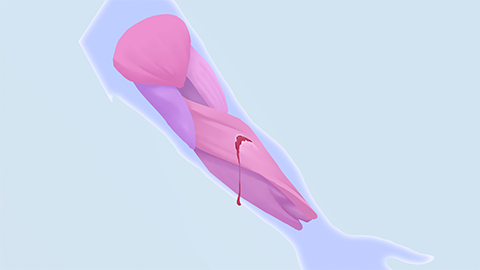How to treat a tendon strain
Generally, tendon strains may be caused by factors such as lack of warm-up before exercise, excessive range of motion, tendonitis, tenosynovitis, or degenerative tendon changes. It is recommended to seek medical attention promptly, identify the underlying cause, and follow a doctor's guidance for improvement through general treatments, medications, and other methods. Specific analysis is as follows:

1. Lack of warm-up before exercise: Failing to adequately warm up before physical activity leaves tendons in a stiff state, making them prone to strain when sudden force is applied—commonly seen during running or ball sports. Immediately stop exercising and apply an ice pack to the strained area for 15–20 minutes, 3–4 times daily, to reduce pain and swelling. After 48 hours, switch to heat therapy to promote blood circulation.
2. Excessive range of motion: Movements during exercise or daily activities that exceed the tendon’s tolerance can cause fiber tearing and lead to strain. Apply elastic bandages with moderate compression to the affected area, limit movement, and wear supportive braces if necessary to prevent further tendon damage. Gradually resume light activity once pain subsides.
3. Tendonitis: Chronic repetitive friction causes inflammation in tendons, reducing their elasticity and increasing susceptibility to strain, often accompanied by localized pain and tenderness. Patients should follow medical advice to use medications such as diclofenac sodium sustained-release tablets, ibuprofen sustained-release capsules, or celecoxib capsules to relieve inflammatory pain.
4. Tenosynovitis: Inflammation of the tendon sheath due to overuse compresses the tendon and impairs its gliding function, making strain more likely under stress. This condition commonly occurs in the wrist and fingers. Under medical guidance, drugs such as naproxen sodium tablets, etoricoxib tablets, or loxoprofen sodium tablets may be used to reduce inflammation.
5. Degenerative tendon disease: With aging or chronic overuse, tendon fibers deteriorate and lose elasticity, making them vulnerable to strain even from minor forces, and healing tends to be difficult. Follow medical advice to use supplements such as glucosamine hydrochloride capsules, chondroitin sulfate sodium tablets, or hyaluronic acid injections to nourish the tendons.
In daily life, pay attention to gradually increasing exercise intensity and avoid sudden strenuous activity. Perform proper stretching and relaxation after exercise. During recovery from a strain, avoid resuming high-intensity activities too early. Maintain a balanced diet rich in protein and vitamins to support tendon repair and maintain joint health.




